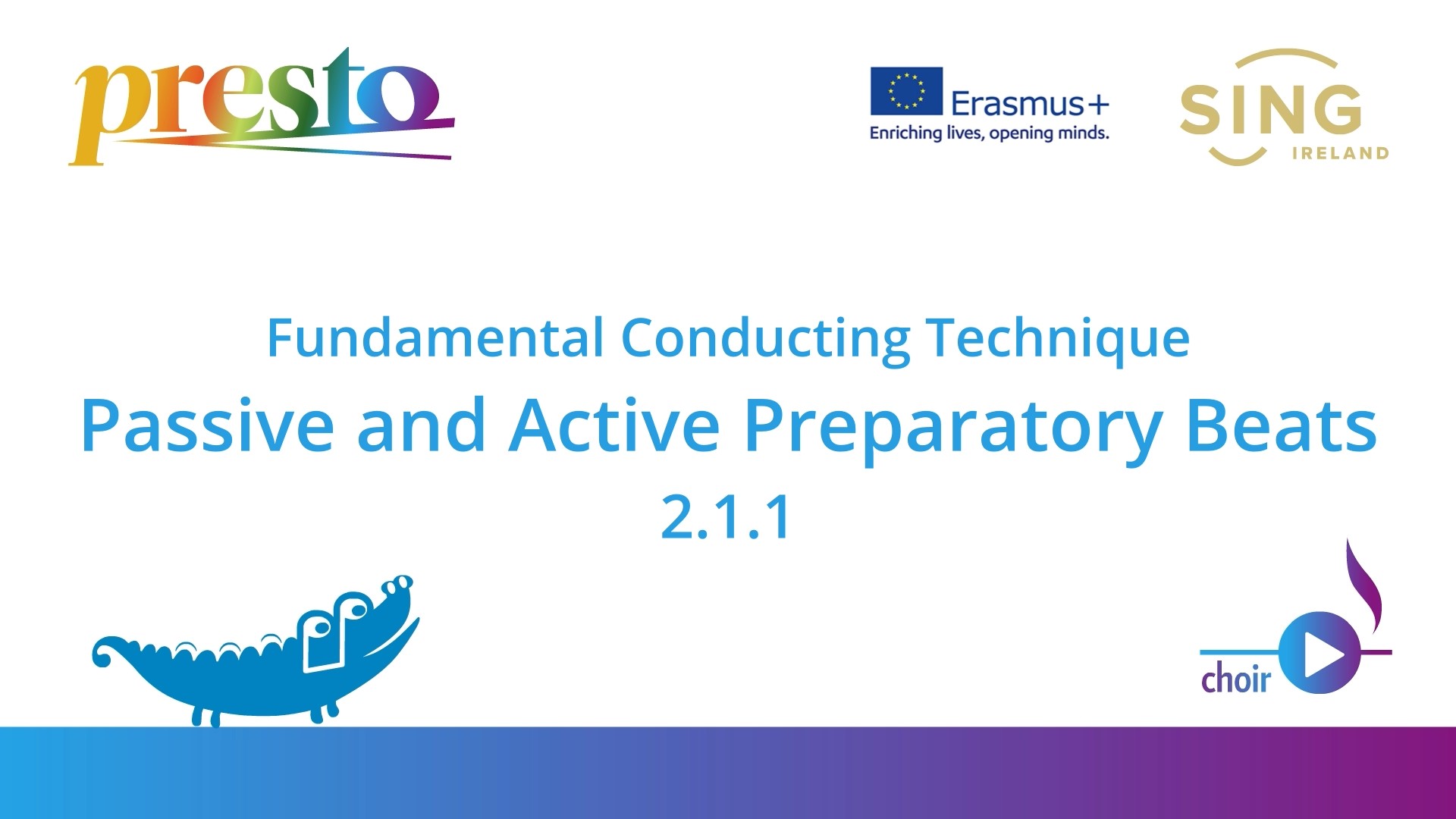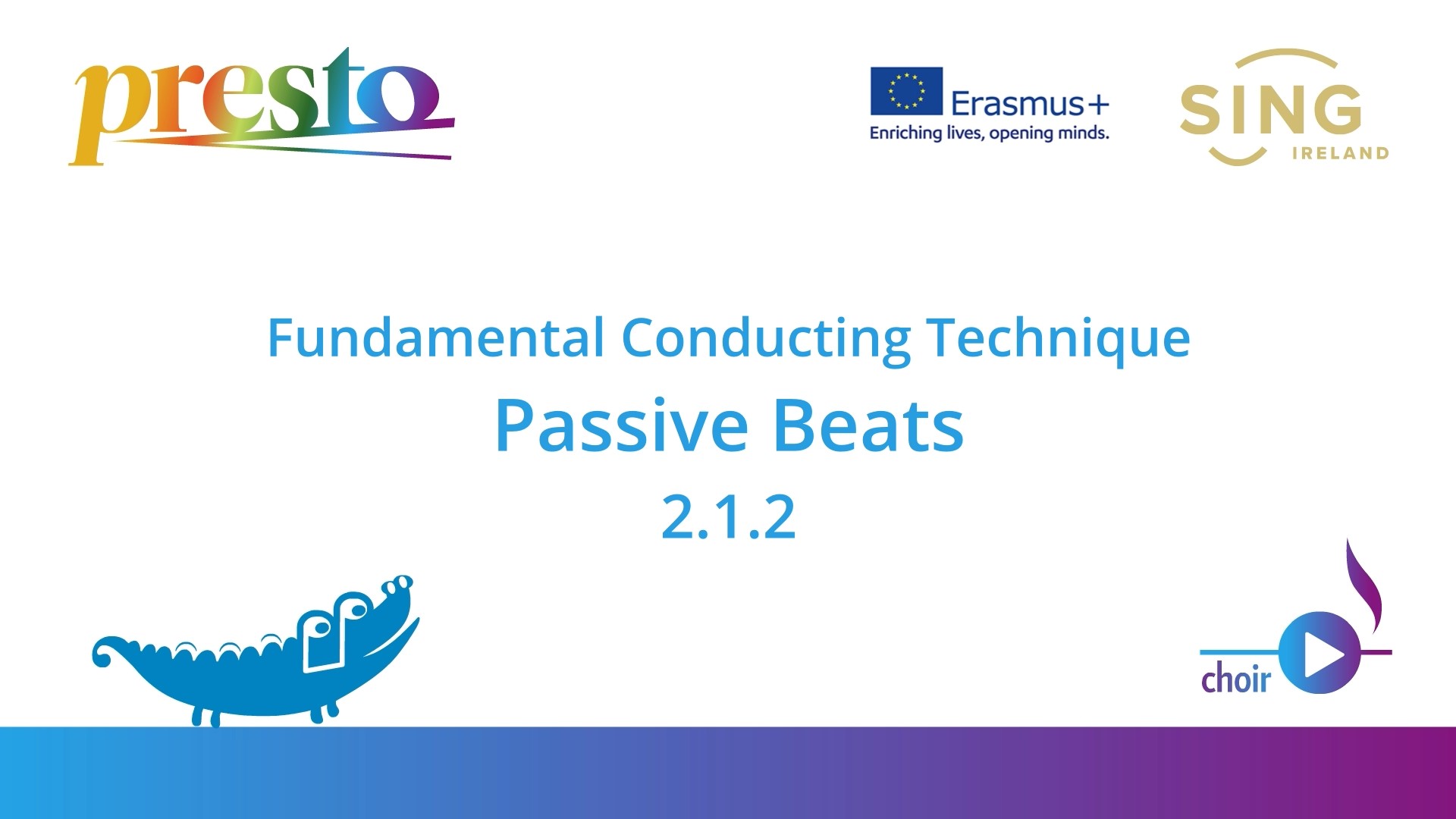Active
In conducting there are ‘active’ and ‘passive’ beats. An example of an active beat is the preparatory upbeat that we looked at earlier. We saw that you normally signal the start of a piece by showing the breath on the upbeat and the first entry on the downbeat. That preparatory upbeat is called ‘active’ because it creates an impulse that brings about a response: it causes your singer to start singing.
Passive
You can use ‘passive’ beats in situations where you feel that a single preparatory beat won’t be enough. In your gesture, a passive beat is small and has little energy beyond what’s needed for maintaining the tempo.
For example, your singers may need additional beats in order to feel the correct tempo and/or to make a confident entry. Those additional beats are called passive beats. Or you may be conducting a group for the first time and an extra beat - a passive beat - will provide more security. Sometimes there’s a change of tempo in the middle of a piece. Showing a passive beat (or beats) buys time for your singers to adjust to the new speed.




